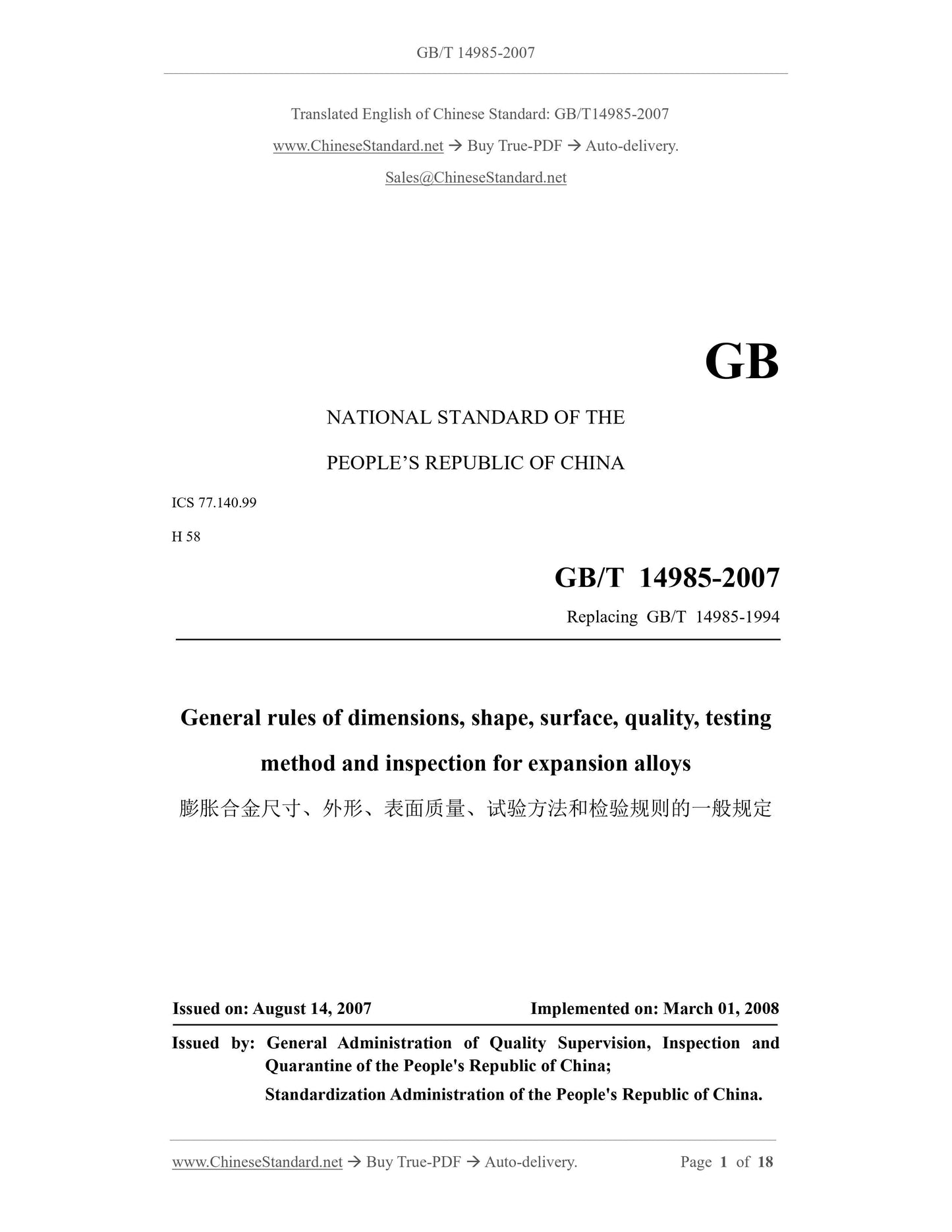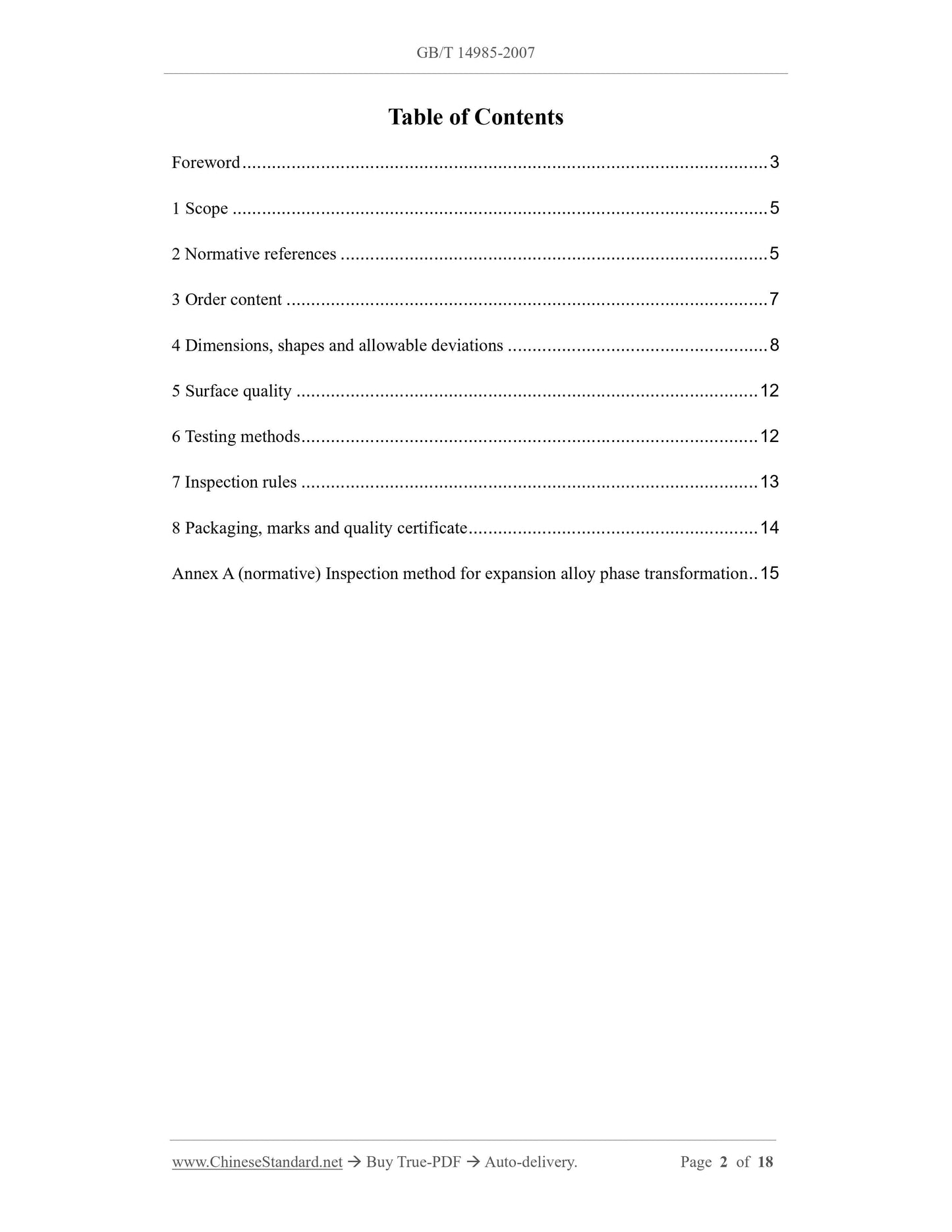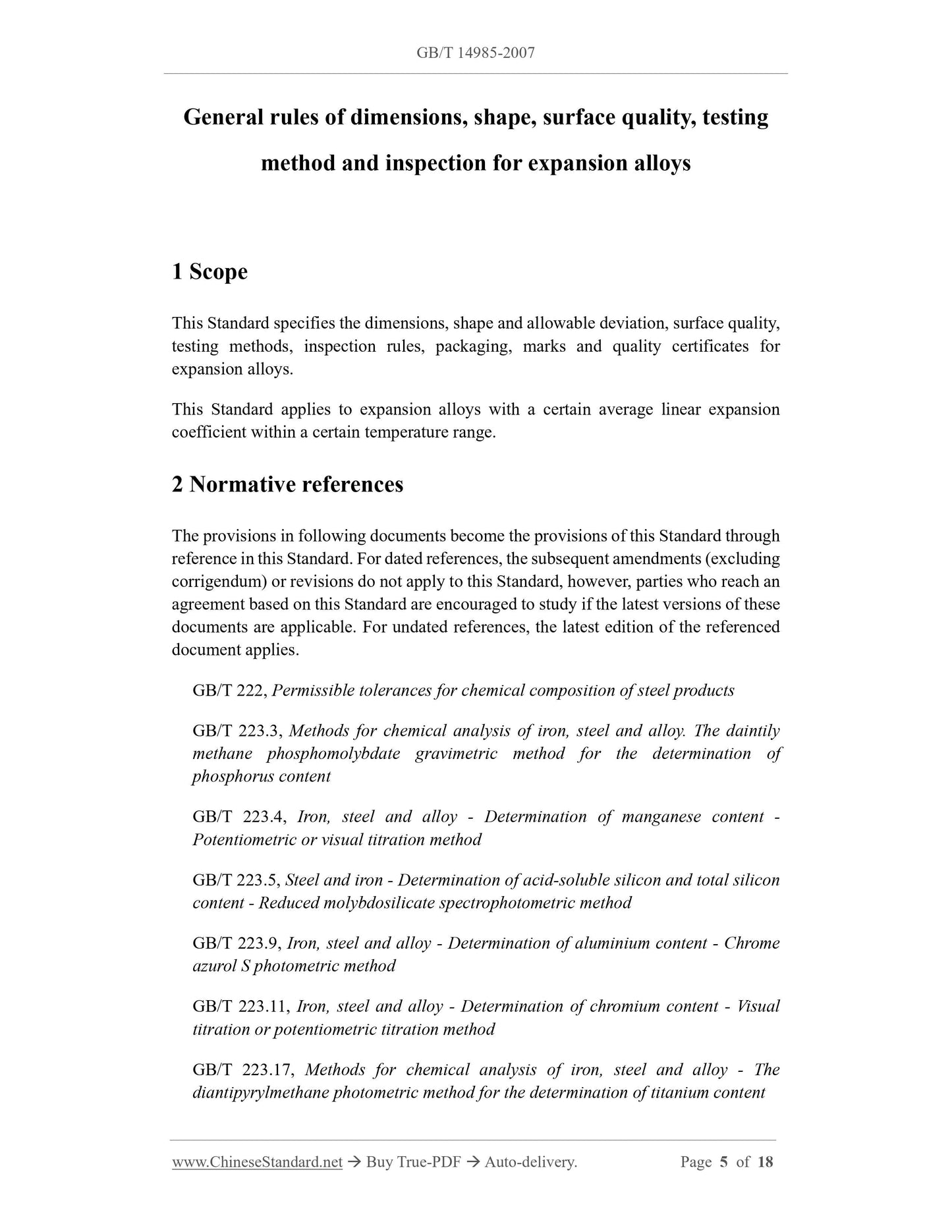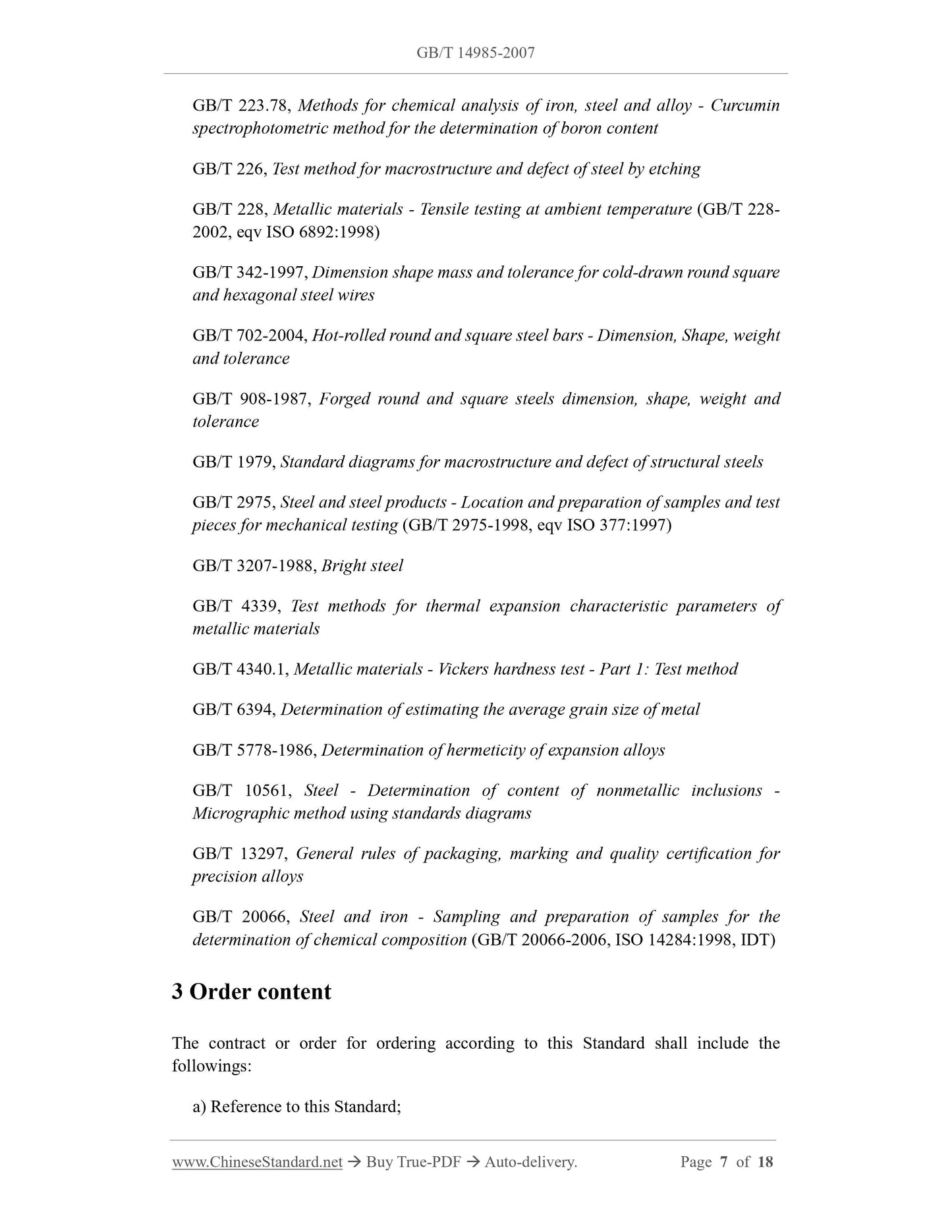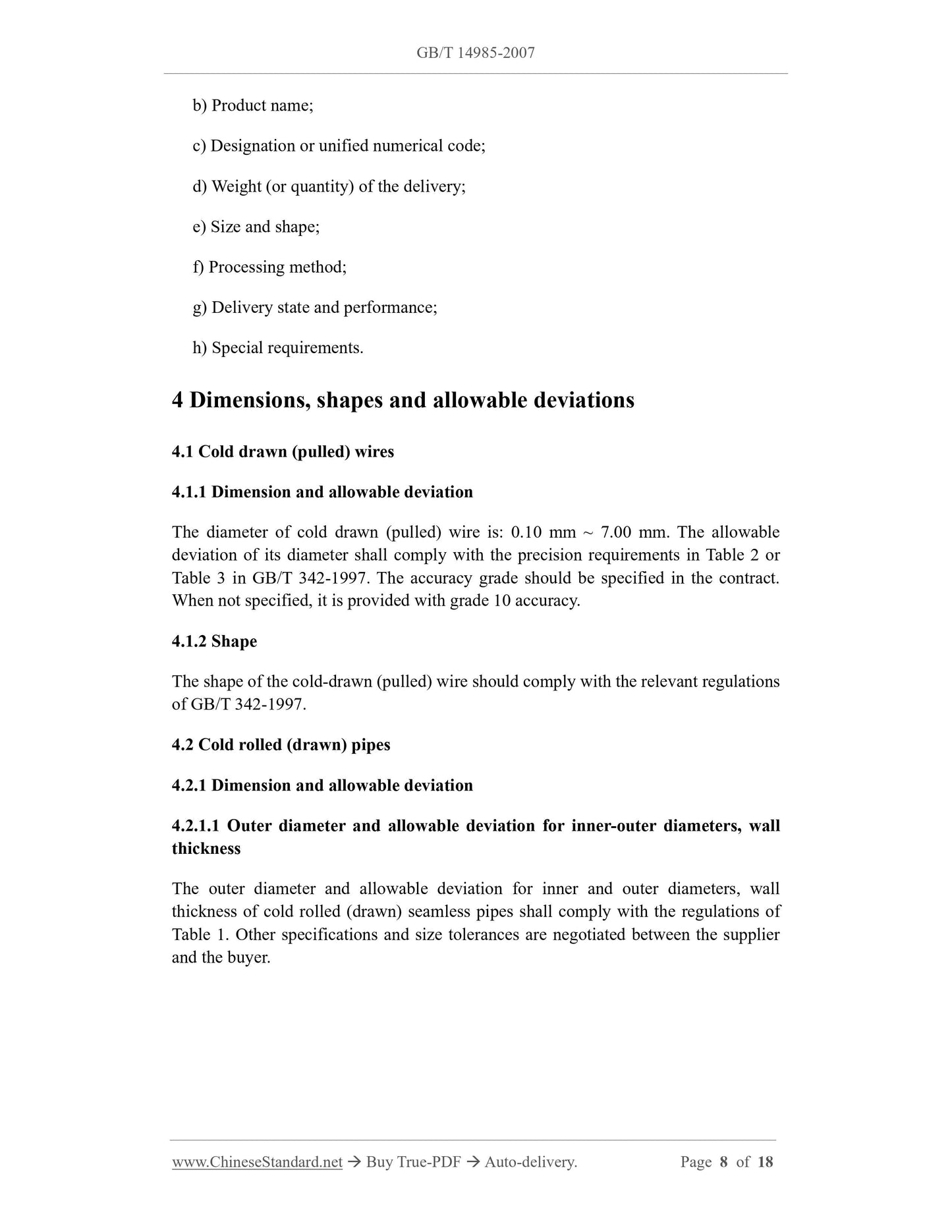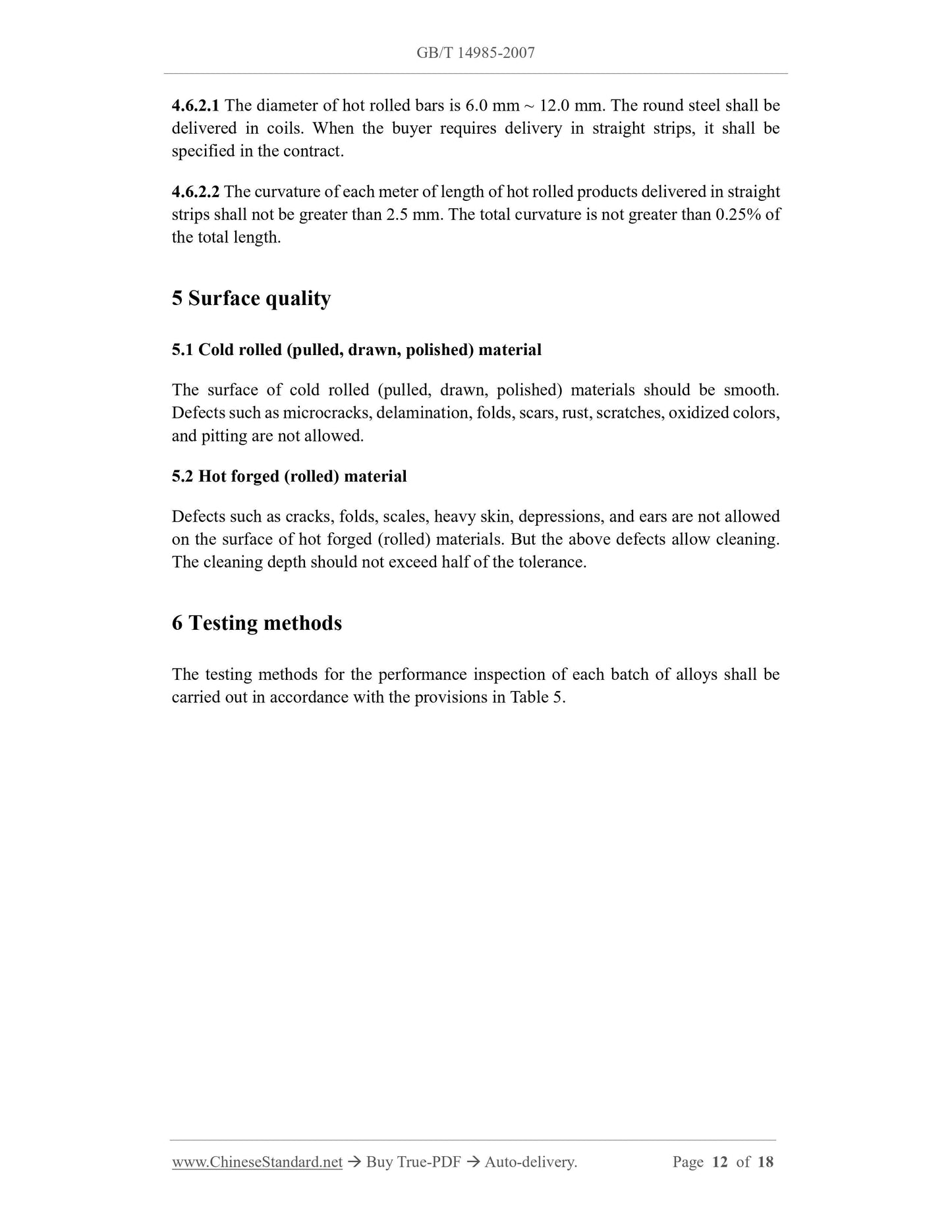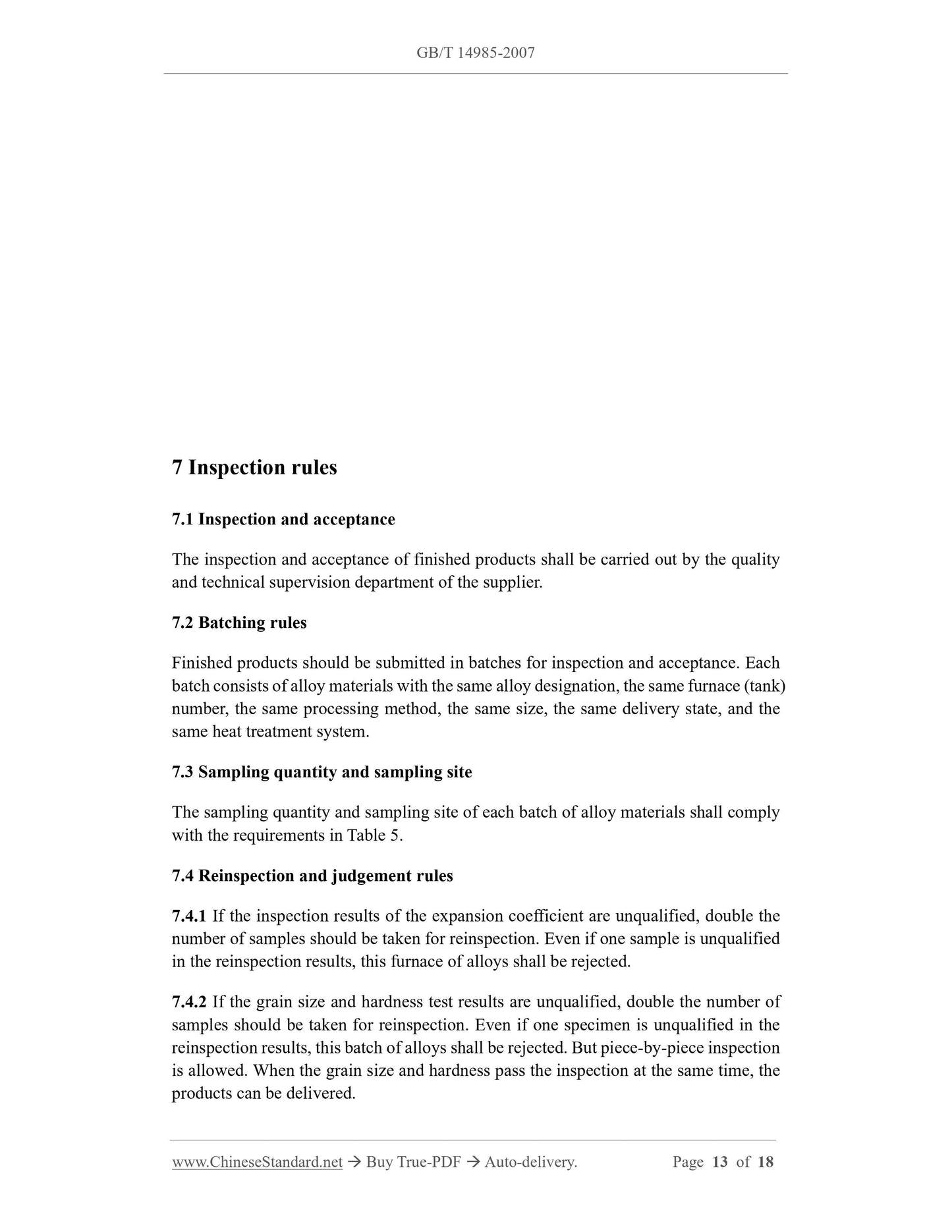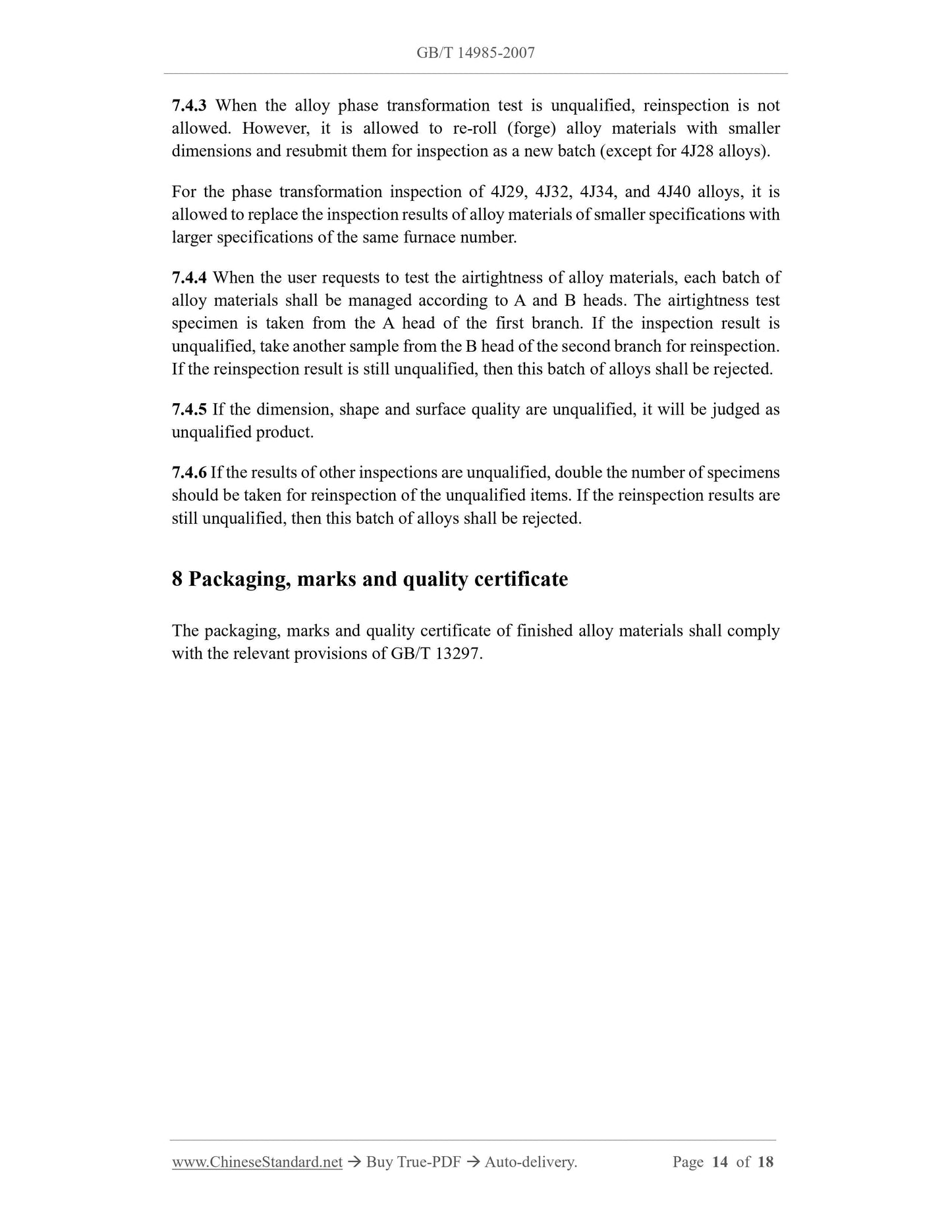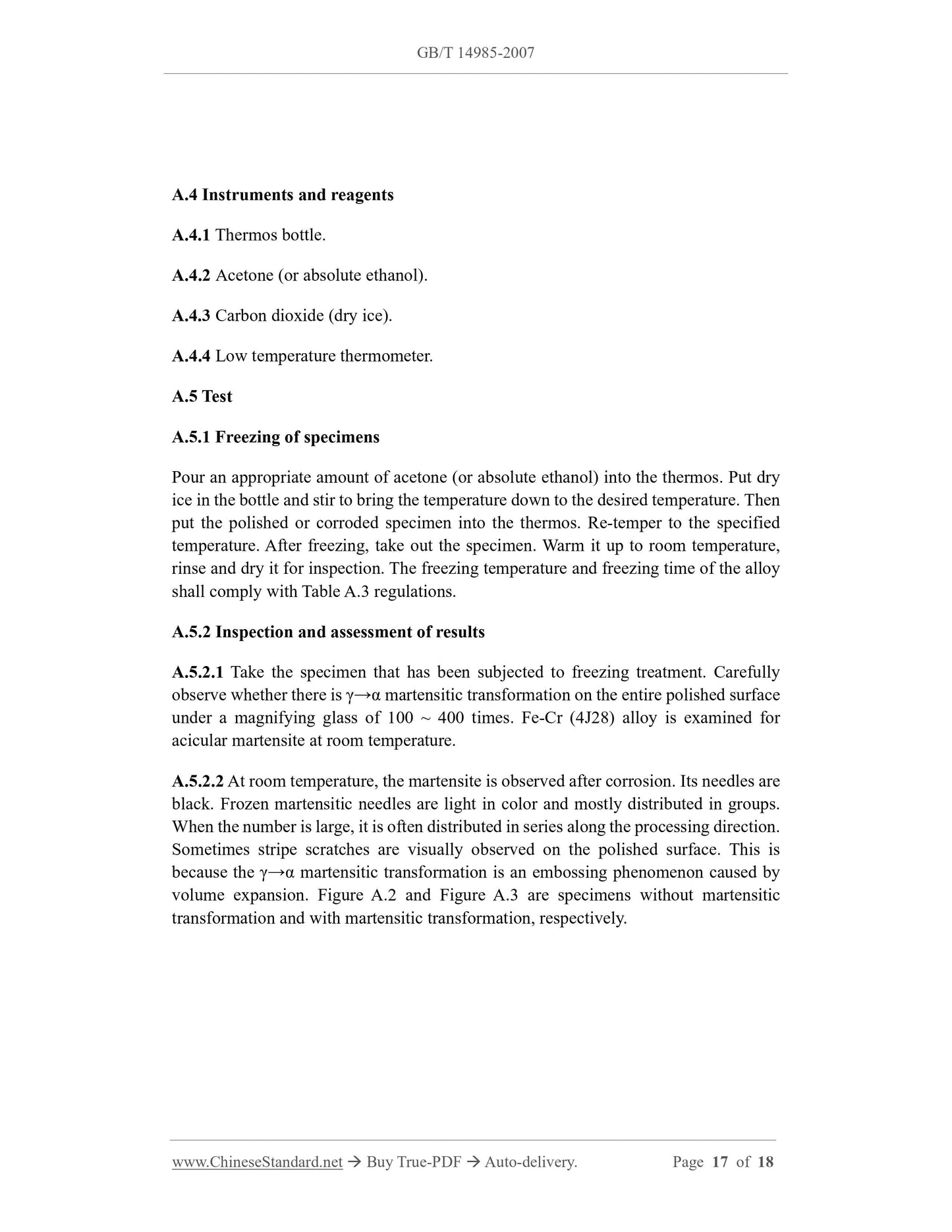1
/
of
9
www.ChineseStandard.us -- Field Test Asia Pte. Ltd.
GB/T 14985-2007 English PDF (GB/T14985-2007)
GB/T 14985-2007 English PDF (GB/T14985-2007)
Regular price
$160.00
Regular price
Sale price
$160.00
Unit price
/
per
Shipping calculated at checkout.
Couldn't load pickup availability
GB/T 14985-2007: General rules of dimensions, shape, surface, quality, testing method and inspection for expansion alloys
Delivery: 9 seconds. Download (and Email) true-PDF + Invoice.Get Quotation: Click GB/T 14985-2007 (Self-service in 1-minute)
Newer / historical versions: GB/T 14985-2007
Preview True-PDF
Scope
This Standard specifies the dimensions, shape and allowable deviation, surface quality,testing methods, inspection rules, packaging, marks and quality certificates for
expansion alloys.
This Standard applies to expansion alloys with a certain average linear expansion
coefficient within a certain temperature range.
Basic Data
| Standard ID | GB/T 14985-2007 (GB/T14985-2007) |
| Description (Translated English) | General rules of dimensions, shape, surface, quality, testing method and inspection for expansion alloys |
| Sector / Industry | National Standard (Recommended) |
| Classification of Chinese Standard | H58 |
| Classification of International Standard | 77.140.99 |
| Word Count Estimation | 12,115 |
| Date of Issue | 2007-08-14 |
| Date of Implementation | 2008-03-01 |
| Older Standard (superseded by this standard) | GB/T 14985-1994 |
| Quoted Standard | GB/T 222; GB/T 223.3; GB/T 223.4; GB/T 223.5; GB/T 223.9; GB/T 223.11; GB/T 223.17; GB/T 223.18; GB/T 223.20; GB/T 223.24 |
| Issuing agency(ies) | General Administration of Quality Supervision, Inspection and Quarantine of the People's Republic of China, Standardization Administration of the People's Republic of China |
| Summary | This standard specifies the size of the expansion alloys, shape and tolerances, test methods, , inspection rules, packaging, marking and quality certification, such as surface quality. |
Share
